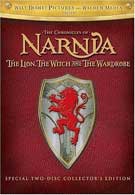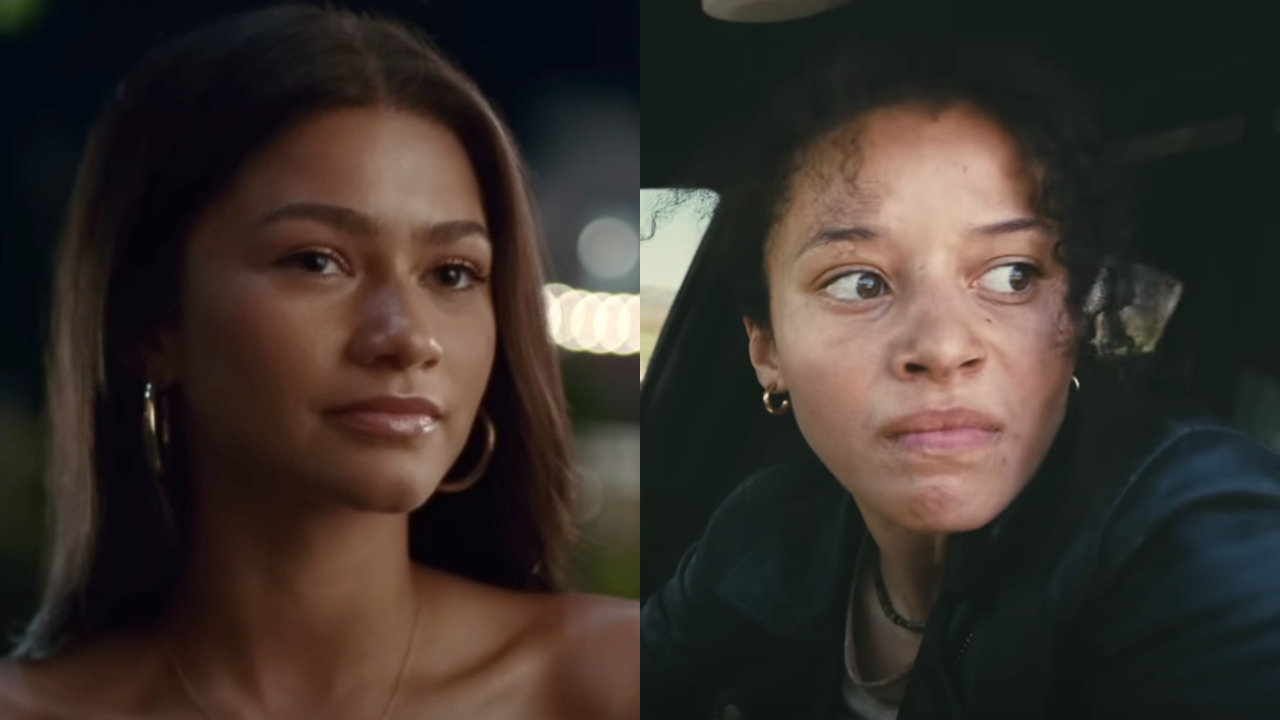The Chronicles of Narnia remain one of my favorite stories from my childhood. I remember the animated version of The Lion, The Witch, and the Wardrobe that initially piqued my interest and I remember sneaking a light on at night to read just one more chapter of the books. Because of that history, much like The Lord of the Rings, any filmmaker was going to have to do quite a job to live up to my expectations of a big screen adaptation of the books. I probably shouldn’t have had any doubts though. From the second “Walt Disney Pictures presents” appears on screen, this movie not only lives up to, but actually exceeds my wildest dreams of what a Narnia movie could be. It’s been placed later in the series in more recent years, but when I was growing up The Lion, The Witch, and the Wardrobe was the first book in The Chronicles of Narnia. Although other books explain more of the history of Narnia and the backstory of the events that transpire in Wardrobe, this book is the perfect place to start a series of movies. It’s the book that C.S. Lewis used to introduce readers to the world of Narnia, and a great chance to be introduced the magical world through the eyes of children.
Narnia, for those not aware, is a magical land separate from our own. When the Pensevie children, Peter, Susan, Edmund, and Lucy, are sent away from the danger of the air raids on London they discover a magical wardrobe that acts as a doorway into the other world. But not all is well in Narnia. It is currently under the rule of the wicked White Witch who keeps the land trapped in winter (but never Christmas). The denizens of Narnia are awaiting the return of Aslan, a Christ-figure in the form of a lion, and the fulfillment of a prophesy involving “two sons of Adam and two daughters of Eve” helping defeat the queen and freeing Narnia. Think the prophesy and wonder of Harry Potter meets the fantasy of Lord of the Rings and you get close to the Narnia story.
I wouldn’t imagine fantasy as an easy endeavor in the post-LotR movie era, so Disney and director Andrew Adamson (Shrek) went the smart route and hired Weta Workshop, who were behind Peter Jackson’s epic effects, to create the magic and wonder of Narnia as well. That was money well spent as far as the audience is concerned, because the world of Narnia looks as complete and real as Middle Earth was for Jackson. Everything looks wondrous with so much detail placed in that cameras probably didn’t even capture half of it. The creature effects are equally impressive, with realistic creations of lions, beavers, wolves, and fantasy creatures like minotaurs and fauns. There really isn’t a moment in the movie where the effects stand out and break the audience out of the magic of the movie itself – the best praise that can be given to a movie like this.
Adamson’s second smart decision was to go with complete unknowns for the child actors that the film centers around. Child actors can always be a difficult obstacle to overcome, especially when the movie depends so heavily on them like this one does. As children, the four lead actors are impressive. As unknown actors they are even more impressive and perform jobs with more talent than a lot of Hollywood moppets would have shown. Particularly of note is Georgie Henley as Lucy Pensevie, through whose eyes we initially see Narnia. It would be easy to find a child who could just mug surprise and wonder for the camera, but Henley completely sells this magical world to the audience.
If I had any complaints about the casting of the film it would be with the adult cast. Not James McAvoy (Mr. Tumnus) or Tilda Swinton (the White Witch) who help the younger cast members with excellent performances, but rather the voice work of Liam Neeson as Aslan, the heroic figurehead of Narnia. While Neeson usually excels in the mentor/teacher roles that Aslan fills, his voice is too recognizable for such a notable character. Aslan’s speaking is the only part of the film that really tears the audience from the movie since Neeson’s voice is so recognizable. After going with unknowns for the children, it would have been smarter to fill the well known role of Aslan with a lesser known voice, completing the character instead of having a character that spoke with a well-known actor’s voice.
Although there are deviations from the book, or possibly because of those changes, The Lion, The Witch, and the Wardrobe is an extremely strong fantasy film. Adamson’s film pays tribute to the original novel while fleshing out ideas that may only have been a sentence or two in the book and adapting the novel to a movie’s pacing. The result is a beautiful and entrancing children’s book brought to life, with a story that should entrance audiences despite their level of familiarity with the original stories. As much as I love their movies, Disney DVDs usually leave something to be desired. With the exception of their animated “Platinum Editions”, most of the DVD releases that come from the Mouse House fit a specific template – a template that would have been less than satisfactory for a movie like The Chronicles of Narnia. Thankfully the folks at Disney agreed and so The Lion, the Witch, and the Wardrobe has been released in separate single and two-disc editions, both of which offer more than bare bones.
The single disc version contains the movie, which has a fantastic transfer of video and sound. Included with the movie are two separate commentary tracks. One is a production commentary track with director Andrew Adamson, producer Mark Johnson, and production designer Roger Ford. The second features the four children along with Adamson offering their unique perspective on making the film. Finally there is a pop up “fun facts” track that can play during the movie. Not everything on the disc is strictly production oriented though – there is a blooper reel included as well, featuring the four young actors singing their homemade “Check the gate” song which is talked about in more depth on the two-disc version (Check the gate is a command from a movie director after a successful shot which, after hearing tons of times, the children decided needed its own song).
Your Daily Blend of Entertainment News
The two-disc version contains everything the single disc edition contains, plus a second disc of behind the scenes features. The release boasts ten hours of bonus materials wrapped in a beautiful package that creates the feel of the movie’s wardrobe. I’ve been a fan and student of movies for many years now and I typically know how everything is done behind the scenes, but this is one of those DVD releases that is still interesting to watch as it explores production from the director’s focus of the movie to costume designers, visual effects, and even a featurette on the children’s journey as both characters and actors.
The main menu is broken down into two selections: “Creating Narnia” which takes you to featurettes on the director, the children, and the filmmakers, and “Creatures, Lands, & Legends”, which looks at the ideas behind Narnia. Bridging the two is a section on the creatures of Narnia which acts as a bestiary on the “Creatures, Lands, & Legends” side but offers an icon of the Wardrobe for the viewer to click to enter. Entering the Wardrobe gives the other side – the production featurettes on each of the same creatures. It’s a great way to present the fictional aspect of the monsters of Narnia and the fact of bringing those creatures to life.
The “Chronicles of the Director” featurette explains how Adamson got the job following his Oscar win with Shrek (who’d have thought the person to beat Disney in the first ever Animated Feature award category would be offered a job by them?) and how he chose to approach the film: not as an adaptation of the novel, but as an adaptation of his childhood memories of the novel. It’s that approach that I think makes the movie work as well as it does. Adamson is paying tribute to the novel by creating it the way fans will remember it, not trying to hold true to every word on the page. The featurette also exposes how much the other Narnia novels influenced this movie like the design of the Wardrobe, which portrays key events from The Magicians’s Nephew.
“Cinematic Storytellers” turns the camera on the production team from Weta Workshop guru (and rapidly approaching movie-making legend status) Richard Taylor, to composer Harry Gregson-Williams and editor Sim Evan-Jones. Each chapter allows the different members of the production staff to explain what job they do and what concepts they had in mind when doing that job. It’s a great look at movie making even for the most knowledgeable move buff.
“Explore Narnia” gives the viewer access to a map of Narnia with the important locations from the movie marked. Selecting one of those locations takes the viewer on a computer rendered tour of the location, with some beautiful production stills, concept art, and original novel artwork mixed in while a narrator explains the history and significance of the locale. Designed more for the younger viewers, it’s still an interesting and interactive way of learning more about Narnia.
Add on top of that a featurette that explores the timeline of the children’s time in Narnia as opposed to what happens in England during their brief time gone, a biography on C.S. Lewis, the author of the Narnia Books, and a deconstruction of one of the film’s more intense scenes, and other bonus materials and you’ve got a fully loaded two-disc set worthy of The Chronicles of Narnia.

